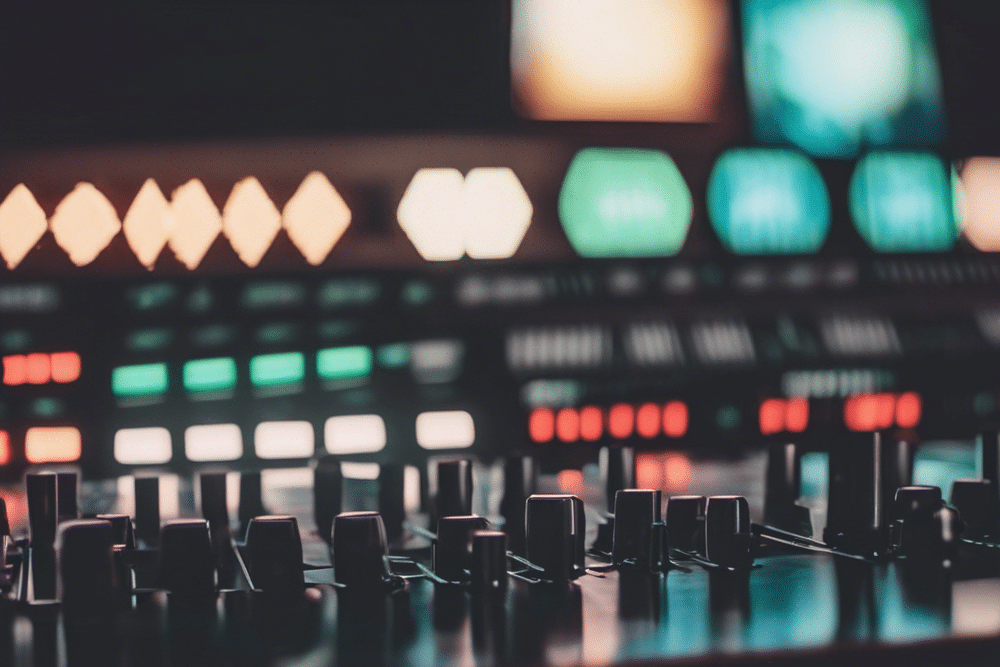Estimated reading time: 8 minutes
Introduction: The Power of Bass
Have you ever felt the floor vibrate beneath your feet at a music festival? Or experienced that chest-thumping sensation when a particularly heavy track drops in a club? If so, you’ve experienced the raw power of bass music. But what exactly is bass music, and why does it have such a profound effect on us?
In this comprehensive guide, we’ll explore the world of bass music, from its origins to its various subgenres, and everything in between. Whether you’re a seasoned music producer or a curious fan, this article will help you understand the intricacies of this captivating genre and its impact on the electronic music scene.
Table of contents
- Introduction: The Power of Bass
- The Foundations of Bass Music
- Subgenres of Bass Music
- The Science Behind Bass Music
- The Role of Technology in Bass Music
- The Cultural Impact of Bass Music
- The Future of Bass Music
- Video: An Intro To Bass Music (ft. NGHTMRE & Slander)
- Conclusion: The Enduring Appeal of Bass Music
- FAQs
The Foundations of Bass Music
Defining Bass Music
Bass music is a broad umbrella term that encompasses a wide range of electronic music genres characterized by their emphasis on low-frequency sounds, particularly heavy basslines. It’s not a single, specific genre but rather a collection of styles that share a common focus on the lower end of the frequency spectrum.
These low-end frequencies, typically ranging from 20 Hz to 200 Hz, are what give bass music its distinctive sound and physical impact. When played through powerful sound systems, these frequencies can be felt as much as heard, creating an immersive experience that resonates through your entire body.
The Evolution of Bass Music
Bass music has its roots in various forms of dance music, including:
- Dub and reggae
- Hip-hop
- House and techno
- Drum and bass
As electronic music production techniques advanced, producers began to experiment more with manipulating and emphasizing bass frequencies. This experimentation led to the development of new genres and subgenres, each with its own unique take on bass-heavy sound.
Subgenres of Bass Music
The world of bass music is incredibly diverse, with numerous subgenres that have emerged over the years. Let’s explore some of the most prominent ones:
Dubstep
Originating in the UK in the early 2000s, dubstep is characterized by its sparse, syncopated rhythms and earth-shaking basslines. Key elements of dubstep include:
- Half-time drum patterns
- Heavy use of sub-bass
- Wobble bass sounds
- Dark, atmospheric textures
Notable dubstep artists include Skrillex, Rusko, and Benga.
Drum and Bass
Drum and Bass (DnB) is known for its fast breakbeats and prominent basslines. It typically features:
- Breakbeats at around 160-180 BPM
- Complex drum patterns
- Deep, rolling basslines
- Occasional use of vocal samples
Influential DnB artists include Andy C, Goldie, and Chase & Status.
Trap
Trap music blends elements of hip-hop and dubstep, featuring:
- 808 drum machine sounds
- Rapid hi-hat patterns
- Booming sub-bass
- Often includes rap vocals
Key trap producers include RL Grime, Flosstradamus, and Baauer.
Future Bass
A more recent development in the bass music scene, future bass is characterized by:
- Melodic synth leads
- Chopped and pitched vocal samples
- Sidechain compression for a “pumping” effect
- Emotional chord progressions
Notable future bass producers include Flume, San Holo, and Cashmere Cat.
Bass House
Combining elements of house music with heavy basslines, bass house features:
- Four-on-the-floor kick drum patterns
- Distorted, gritty basslines
- Tech house-inspired percussion
- Often includes vocal hooks
Artists like Jauz, AC Slater, and Joyryde have helped popularize this subgenre.
The Science Behind Bass Music
Understanding Sound Waves
To truly grasp what makes bass music so powerful, it’s essential to understand the basics of sound waves. Sound is created by vibrations that travel through the air as waves. These waves have different properties:
- Frequency: Measured in Hertz (Hz), this determines the pitch of the sound. Lower frequencies produce deeper sounds.
- Amplitude: This relates to the volume or intensity of the sound.
- Waveform: The shape of the wave, which affects the timbre or quality of the sound.
Bass frequencies are characterized by their long wavelengths and low frequencies. This is why you can often feel bass even when you can’t clearly hear it – the long waves are able to travel through solid objects and be felt physically.

Types of Bass Waveforms
In electronic music production, different types of waveforms are used to create various bass sounds:
- Sine waves: The simplest and purest form of sound wave, often used for sub-bass.
- Square waves: Characterized by their harsh, buzzy sound.
- Sawtooth waves: Known for their rich, bright tone.
- Triangle waves: Softer than square waves but with more harmonics than sine waves.
Producers often combine and manipulate these waveforms to create complex, layered bass sounds that give their tracks their signature feel.
The Role of Technology in Bass Music
Production Tools
The evolution of music production technology has played a crucial role in the development of bass music. Some key tools include:
- Digital Audio Workstations (DAWs): Software like Ableton Live, FL Studio, and Logic Pro have made it easier for producers to create and manipulate bass sounds.
- Synthesizers: Both hardware and software synths are used to generate and shape bass tones.
- Audio effects: Plugins for compression, distortion, and EQ are essential for crafting powerful basslines.
- Samplers: Allow producers to use pre-recorded bass sounds and manipulate them in new ways.

Sound Systems
The impact of bass music is heavily dependent on the quality of the sound system it’s played through. Key components include:
- Subwoofers: Specialized speakers designed to reproduce low frequencies.
- Bass bins: Large speaker enclosures optimized for bass reproduction.
- Amplifiers: Powerful amps are needed to drive the large amounts of energy required for bass frequencies.
The combination of these elements allows bass music to be experienced in its full, physical glory in clubs and at festivals.
The Cultural Impact of Bass Music
Global Bass Scenes
Bass music has spawned vibrant scenes around the world, each with its own unique flavor:
- UK: The birthplace of dubstep and grime, with a thriving underground scene.
- USA: Home to a diverse bass music landscape, from trap in the South to west coast bass on the Pacific.
- Australia: Known for its innovative producers pushing the boundaries of bass music.
- Japan: Has developed a unique take on bass music, blending it with elements of J-pop and anime culture.
Bass Music Events and Festivals
Dedicated bass music festivals have become increasingly popular, including:
- Rampage: Europe’s biggest drum and bass and dubstep festival.
- Lost Lands: A bass music festival curated by dubstep producer Excision.
- Outlook Festival: A celebration of soundsystem culture and bass music.
These events showcase the communal aspect of bass music, bringing together fans from all over the world to experience the music on massive sound systems.
The Future of Bass Music
As technology continues to advance and new generations of producers emerge, the future of bass music looks bright and full of potential. Some trends to watch include:
- Increased genre-blending: Producers are increasingly mixing elements from different bass music subgenres to create new, hybrid styles.
- Virtual reality experiences: VR technology could revolutionize how we experience bass music, creating immersive, multi-sensory environments.
- Advancements in sound system technology: Innovations in speaker and amplifier design could lead to even more powerful and precise bass reproduction.
- AI-assisted production: Machine learning algorithms could help producers create more complex and innovative bass sounds.
Video: An Intro To Bass Music (ft. NGHTMRE & Slander)
Conclusion: The Enduring Appeal of Bass Music
Bass music, in all its forms, continues to captivate listeners and push the boundaries of what’s possible in electronic music production. Its physical impact, emotional depth, and constant evolution ensure that it remains a vital and exciting part of the global music landscape.
Whether you’re a producer looking to create your next bass-heavy track or a fan eager to dive deeper into the scene, the world of bass music offers endless possibilities for exploration and enjoyment. So the next time you feel those low frequencies rumbling through your body, take a moment to appreciate the artistry and technology that went into creating that powerful sound.
Remember, bass music is more than just a genre – it’s a physical experience, a cultural movement, and a testament to human creativity and our eternal fascination with the power of sound.
Related Posts
FAQs
Bass music refers to a collection of electronic music genres that emphasize low-frequency sounds, particularly heavy basslines. It includes various styles like dubstep, drum and bass, and trap, all focusing on creating a powerful physical and auditory experience through deep bass frequencies.
Bass music evolved from genres like dub, reggae, hip-hop, house, and techno. Advances in music production technology allowed producers to experiment with bass frequencies, leading to the creation of new subgenres like dubstep, drum and bass, and future bass.
Popular subgenres include dubstep, known for its wobble bass and dark textures; drum and bass, featuring fast breakbeats and rolling basslines; trap, blending hip-hop and electronic elements; and future bass, which is melodic and emotive with chopped vocal samples.
Bass music uses low-frequency sounds, typically between 20 Hz and 200 Hz, which can be felt as vibrations through the body. These long wavelengths can travel through solid objects, creating a physical sensation that complements the auditory experience.
Technology has been crucial in shaping bass music. Digital Audio Workstations (DAWs), synthesizers, and audio effects like compression and EQ allow producers to create complex bass sounds. High-quality sound systems with subwoofers and bass bins enhance the live experience, making the genre’s impact felt even more powerfully.
